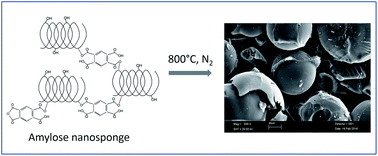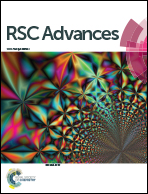Preparation and characterization of microporous carbon spheres from high amylose pea maltodextrin†
Abstract
Porous carbon materials have attracted great interest for their many industrial applications. They have been synthetized using different routes in the way to tailor the physical properties of the materials. In this article, porous carbon materials have been prepared by direct pyrolysis of the hyper cross-linked polymer, known as a nanosponge, obtained by the reaction between Kleptose Linecaps® and pyromellitic dianhydride. The carbon produced shows a very narrow pore size distribution, in the range of 5–17 Å. Moreover, the porous carbon material has a spherical shape as revealed by SEM analysis. In the end, the TGA and the FT-IR analyses clarified the thermal behaviors of the material and demonstrated that the nanosponge is suitable precursor for the production of microporous carbon spheres.



 Please wait while we load your content...
Please wait while we load your content...